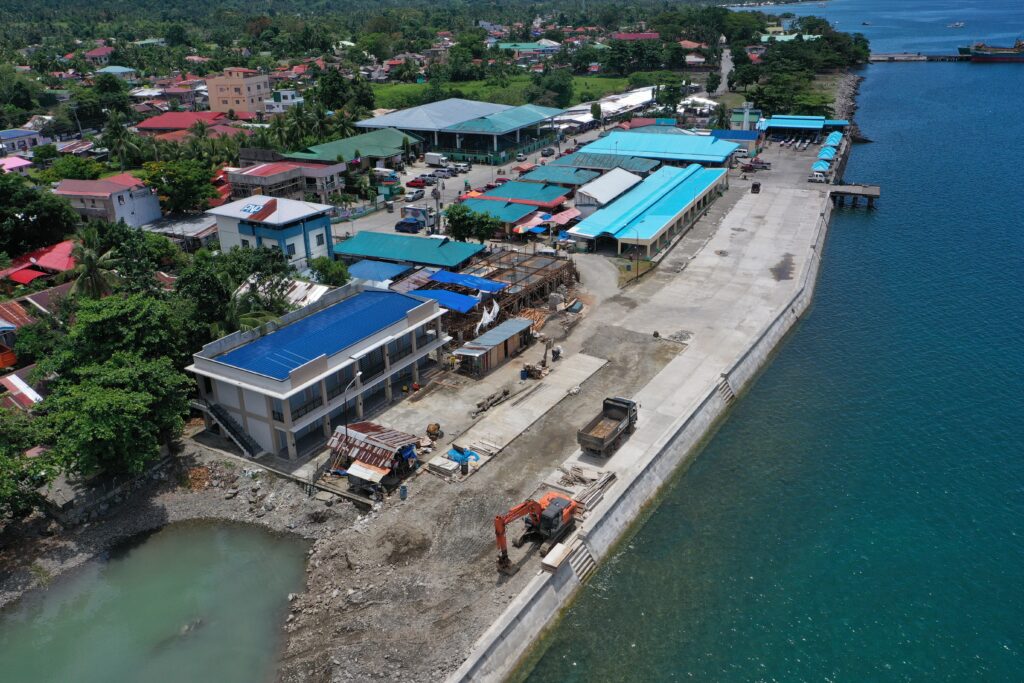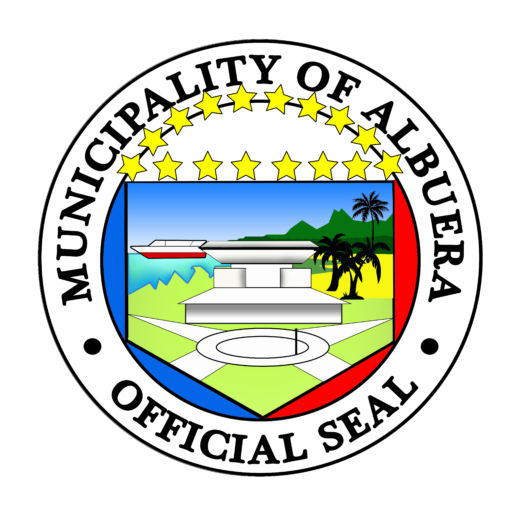Brief History of Albuera
It was about the year 1862 when settlements began to appear in the areas between south of Ormoc farther down towards the town of Baybay. The appearance of these settlements was soon followed by the formation of barangays. Among these cluster of settlements, Sibugay led in terms of population.
Due to the constant danger posed by marauding bands of Moros, who plundered the coastal settlements and kidnapped a number of inhabitants, the village subsequently got together and formed a junta to solve this threat. Among those kidnapped and killed was a prominent Sibugaynon couple Ta Sindi and her husband. During that eventful gathering, it was agreed to adopt St. James the Apostle as their patron saint. The village heads also agreed to construct a tower as “Bantayan sa Hari” near the shore at Magbangon whose mounted volunteers scanned the seas for moro vintas. As the dreaded vessels appeared on the horizon the observer at the watchtower beat the “Karatong” as warning of an impending danger. The men would soon take their families to safety afterwhich they gather along the shore with their bolos and spears ready. Blood flowed from both invaders and defenders but the villagers finally held their ground. Under To Anton and To Ayong, the brave men who were known as “mangagayao sa moro,” the pirates were driven out. As a fitting remembrance for the bravery of the Sibugaynon, the hills of Guinabutan and Guinobatan were named after them.
The growing community was then under the parish of Ormoc. Father Catalino Cabada, parish priest of Ormoc (1849-1867) came to organize the said community, but some of the family heads disagreed that the Poblacion be established near the Sibugay river. This river always threatened the lives of the people that occupied along its sides. Most of the settlers agreed that the Poblacion would be situated in Balugo. But a strong-willed Sibugaynon, Eusebio Calabia, who later became known as Kapitan Sebio, suggested that the image of the Patron Saint be tied on horseback would be driven and left alone by itself. The place where the horse stopped would become the site of the Poblacion, thus deciding the controversy among the inhabitants as to the location of the center of the town. The proposal was carried out and the horse was stuck in the deepest marshes in the heart of the Sibugay settlement. The Sibugaynons won and later the church was erected near the beach just across the place where the horse stopped.
The majority of the settlers disliked to be called Sibugaynons. One day, the settlers held a meeting with the purpose of renaming the community “HERRERA”, thus converting the settlement into a pueblo. During the gathering, a sailboat coming from Pilar Island and on its way to Ormoc dropped anchor with a Spanish priest on board. The priest together with the crew disembarked in order to fetch water at a nearby vicinity. Impressed by the clear and cool water, the priest wandered around. He discovered that beautiful springs abound in the area, like his native town. With a smile, he approached the gathering and inquired the reason of the assembly. The question of renaming the pueblo to Herrera was brought up. Responding immediately the priest said: “Name this pueblo Albuera, I am from Albuera, Spain and your patron saint, Sr. Santiago is also my country’s Patron Saint and is against the Moros. With me, we are Albueranos. Viva Albuera!” Thus, the town of Albuera derived its name.
Towards the end of the Spanish regime in the Philippines, Albuera was directly under the sphere of influence from the municipality of Ormoc and the administrative setup was also in accordance with the ecclesiastical system of territorial domain throughout the country implemented by the Spanish colonial government.
During this period the local government operation including political, socio-economic, religious and cultural activities were concentrated at the Poblacion or “Sawang,” the popular term in the local dialect.
Albuera became a pueblo separating from Ormoc by virtue of a Royal decree from Spain on September 1, 1867. The following year, on June 19, 1868 the town became a parish under the patronage of Santiago Apostol by Cebu Diocesan decree.*
During the early 1900s Albuera was reverted back as a barrio of Ormoc following the American policy of demoting several Philippine towns as annexes of larger municipalities.
The Issue of Taxation
Being part of the political and administrative jurisdiction of Ormoc, the residents of Albuera were obliged to pay taxes as required by the government, which started from the Spanish colonial administration and continued during the American regime.
During the early part of the second decade in the 20th century the purok leaders in “Sawang” were already weary and discontented with the continued and strict tax collection and enforcement from the mother town. Hence, the prominent purok leaders initiated for the crafting of a petition to secede Albuera from the municipality of Ormoc. Among them were Ignacio “Inak” Caorte and Valentin Fortunato who requested “Kapitan” Eusebio Calabia, who in turn, convinced Carmelo Seno Barte, the appointed head of the pueblo during that period, to prepare the petition to be hand carried by his son Hilario Barte, who was a prominent local political figure at that time, to the American governor-general based in Manila.
On December 19, 1917, Governor General Francis Burton Harrison issued Executive Order No. 99 formally creating the municipality of Albuera. The locality officially started to function as separate municipality on January 1, 1918.
[1] Notes: 1. 2022 Edition
2. In Spain, Albuera is a village southeast of Badajoz province in the Extremadura region near the border of Portugal. The village is about 253m. ASL with a land area of 2,640 has. and a population of 2,029 (2018). [Wikipedia]
3. *Redondo y Sendino, Felipe. Breve reseña de lo fue y de lo que es la Diocesis de Cebu. Catholic Church, Diocese of Cebu. (Researcher: Joel E. Conde)



